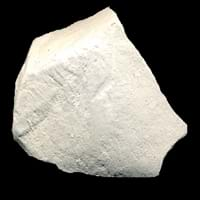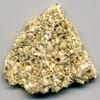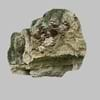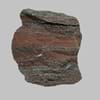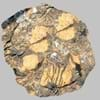Definition
Coquina is a sedimentary rock that is composed either wholly or almost entirely of the transported, abraded, and mechanically-sorted fragments of the shells of molluscs, trilobites, brachiopods, or other invertebrates
Chalk is a soft, white, powdery limestone consisting mainly of fossil shells of foraminifers
Origin
European Foreland Basins
Unknown
Discoverer
Unknown
Unknown
Etymology
From Concha (Latin)+ Coquina(Spanish) +conch(English)= Couquina (mid 19th century)
From old English cealc chalk, lime, plaster; pebble, from Greek khalix small pebble, in English transferred to the opaque, white, soft limestone
Class
Sedimentary Rocks
Sedimentary Rocks
Sub-Class
Durable Rock, Soft Rock
Durable Rock, Soft Rock
Group
Not Applicable
Not Applicable
Other Categories
Coarse Grained Rock, Opaque Rock
Fine Grained Rock, Opaque Rock
Texture
Clastic
Clastic or Non-Clastic
Color
Beige, Buff, Orange
Grey, White, Yellow
Durability
Non-Durable
Durable
Appearance
Layered, Banded, Veined and Shiny
Soft
Interior Uses
Decorative Aggregates, Homes, Hotels, Interior Decoration
Decorative Aggregates, Homes, Interior Decoration
Exterior Uses
Garden Decoration, Office Buildings
As Building Stone, As Facing Stone, Paving Stone, Garden Decoration
Other Architectural Uses
Curbing
Powder
Construction Industry
Building houses or walls, Construction Aggregate
As Dimension Stone, Cement Manufacture, Construction Aggregate, for Road Aggregate, Making natural cement, raw material for manufacture of quicklime and slaked lime, Source of calcium
Medical Industry
Not Yet Used
Not Yet Used
Antiquity Uses
Artifacts, Monuments, Sculpture, Small Figurines
Artifacts, Monuments, Sculpture, Small Figurines
Commercial Uses
Creating Artwork
Alumina Refineries, Creating Artwork, Drawing on blackboards, Gymnasts, athletes and mountain climbers use for grip, In aquifers, Paper Industry, Production of Lime, Raw material for manufacture of quicklime, slaked lime, Soil Conditioner, Whiting, Whiting material in toothpaste, paint and paper
Types
Not Available
Not Available
Features
Available in Lots of Colors and Patterns, Is one of the oldest rock
Clasts are smooth to touch, Is one of the oldest rock, Smooth to touch, Very fine grained rock
Archaeological Significance
Famous Monuments
Data Not Available
Data Not Available
Famous Sculptures
Data Not Available
Data Not Available
Formation
Coquina is a sedimentary rock which is formed when billions of small clam-like seashell, called Coquina, or cockleshell are die and hence are deposited, buried and turns into a rock when pressure is applied.
Chalk is formed from lime mud, which accumulates on the sea floor which is then transformed into rock by geological processes.
Mineral Content
Apatite, Augite, Bronzite, Calcite, Chert, Chlorite, Clay Minerals, Epidote, Feldspar, Garnet, Micas, Muscovite or Illite
Calcite, Clay, Clay Minerals, Quartz, Sand
Compound Content
CaO, Carbon Dioxide, Iron(III) Oxide, MgO
Ca, NaCl, CaO
Types of Metamorphism
Not Applicable
Not Applicable
Types of Weathering
Biological Weathering, Chemical Weathering, Mechanical Weathering
Biological Weathering, Chemical Weathering
Types of Erosion
Coastal Erosion, Sea Erosion, Water Erosion, Wind Erosion
Chemical Erosion, Coastal Erosion, Water Erosion
Grain Size
Coarse Grained
Very fine-grained
Fracture
Irregular
Not Available
Porosity
Highly Porous
Highly Porous
Luster
Dull to Vitreous to Submetallic
Dull
Cleavage
Not Available
Non-Existent
Toughness
Not Available
1
Specific Gravity
1.10-2.24
2.3-2.4
Transparency
Opaque
Opaque
Density
2.8-2.9 g/cm3
2.49-2.50 g/cm3
Specific Heat Capacity
Not Available
Resistance
Heat Resistant, Impact Resistant, Pressure Resistant, Wear Resistant
Heat Resistant
Deposits in Eastern Continents
Asia
Not Yet Found
Brunei, India, Indonesia, Malaysia, Singapore, Thailand, Vietnam
Africa
Not Yet Found
Cameroon, Chad, Ghana, Kenya, Malawi, Sudan, Tanzania, Togo, Zambia, Zimbabwe
Europe
United Kingdom
England, France, Germany, Spain, United Kingdom
Others
Not Yet Found
Not Yet Found
Deposits in Western Continents
North America
USA
Canada, USA
South America
Not Yet Found
Colombia
Deposits in Oceania Continent
Australia
Not Yet Found
Adelaide, New Zealand, Queensland, Tonga, Victoria, Yorke Peninsula
All about Coquina and Chalk Properties
Know all about Coquina and Chalk properties here. All properties of rocks are important as they define the type of rock and its application. Coquina and Chalk belong to Sedimentary Rocks.Texture of Coquina is Clastic whereas that of Chalk is Clastic or Non-Clastic. Coquina appears Layered, Banded, Veined and Shiny and Chalk appears Soft. The luster of Coquina is dull to vitreous to submetallic while that of Chalk is dull. Coquina is available in beige, buff, orange colors whereas Chalk is available in grey, white, yellow colors. The commercial uses of Coquina are creating artwork and that of Chalk are alumina refineries, creating artwork, drawing on blackboards, gymnasts, athletes and mountain climbers use for grip, in aquifers, paper industry, production of lime, raw material for manufacture of quicklime, slaked lime, soil conditioner, whiting, whiting material in toothpaste, paint and paper.

